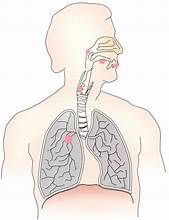Smoking-related cancer is a common and well-researched public health issue that continues to have a significant impact on both individuals and society at large.
The addiction to inhaling and exhaling smoke produced by burning tobacco or other substances is known as smoking. On the other hand, cancer is a collection of illnesses characterized by the aberrant growth and dissemination of abnormal cells. Several scientific investigations have demonstrated a clear connection between smoking and the onset of different forms of cancer.
Liquor and Lung Cancer Risk
Lung cancer is the cancer for which smoking is most commonly linked. Many carcinogens—substances known to cause cancer—are among the chemicals found in tobacco smoke. These carcinogens can harm lung lining cells through inhalation, which can result in the development of cancerous tumors.
Other Cancer Types Associated with Smoking
In addition to lung cancer, smoking has a strong correlation with a number of other cancers. These consist of, but are not restricted to:
- Cancer of the mouth and throat
- Cancer of the esophagus
- Cancer of the pancreas
- Intestinal cancer
- Nephroneal cancer
- Breast cancer
- Cancer of the colon
- Gastric cancer
- Hepatic cancer
Mechanisms of Cancer Associated with Smoking
Smoking causes cancer through a variety of intricate and multifaceted pathways. Many dangerous substances, such as nicotine, carbon monoxide, formaldehyde, benzene, and polycyclic aromatic hydrocarbons, are found in tobacco smoke. These chemicals have the ability to damage DNA, interfere with normal cell function, cause inflammation, and weaken the immune system, all of which are factors in the development of cancer.

Risk of Cancer from Secondhand Smoke
The risk of cancer is not limited to smokers; it also extends to nonsmokers who come into contact with secondhand smoke. Many of the carcinogens found in secondhand smoke are also found in directly inhaled smoke, and prolonged exposure to both can have similar negative health effects. This emphasizes how crucial it is to establish smoke-free spaces in order to safeguard the general public’s health.
Epidemiological studies and statistical evidence
Numerous epidemiological investigations and statistical evaluations have been conducted to investigate the connection between smoking and cancer. These studies consistently show a strong relationship between the two, with smoking being a major global cause of cancer cases.

Effects on Health and Economic Burden
Smoking-related cancer has serious and extensive health effects. It not only has a high death rate but also places a significant strain on the healthcare system and society at large. Treatment of smoking-related illnesses comes at a high financial cost, including medical bills and lost productivity.
Attempts at Prevention and Quitting Smoking
Even though there is no denying the link between smoking and cancer, giving up can greatly lower the risk of getting the disease. In order to implement policies and interventions that support smoking cessation and prevention, public health organizations and the government are essential. Campaigns against smoking, tobacco taxes, laws prohibiting smoking in public areas, and availability of programs to help people quit are a few of these.

Assistance for Smokers
There are a number of resources available to help people who want to stop smoking and raise their chances of success. These resources consist of helplines, support groups, counseling services, and nicotine replacement treatments. Although giving up smoking is a difficult process, there are many advantages, including a lower risk of cancer and improved general health.
Given the complexity of lung cancer and its wide range of stages and forms, a definitive response regarding its curability is difficult to provide. The likelihood of a successful lung cancer cure is contingent upon various factors, including the stage of the disease at diagnosis, the particular kind of lung cancer, and the patient’s general health.
Given the complexity of lung cancer and its wide range of stages and forms, a definitive response regarding its curability is difficult to provide. The likelihood of a successful lung cancer cure is contingent upon various factors, including the stage of the disease at diagnosis, the particular kind of lung cancer, and the patient’s general health.
Early cancer diagnosis and treatment increase the likelihood of a successful outcome and possible cure because the cancer is localized and has not spread to other parts of the body. Radiation therapy, chemotherapy, and surgery to remove the tumor are possible treatment options. To watch for any possible recurrence, frequent surveillance and follow-up are essential, even in these situations.
Unfortunately, it becomes more difficult to fully cure lung cancer in its later stages when it has spread to other organs. Instead, the emphasis is placed on halting the spread of the cancer, treating its symptoms, and enhancing the patient’s quality of life through the use of chemotherapy, immunotherapy, targeted therapies, and palliative care.
The importance of early detection in increasing the likelihood of a successful course of treatment and possibly long-term survival cannot be overstated. For those who are highly susceptible to lung cancer, such as heavy smokers, routine screenings with low-dose computed tomography (LDCT) are advised.
Medical professionals should always be consulted for an accurate diagnosis, customized treatment plans, and the most recent information regarding lung cancer and its potential for cure, even though advancements in research and technology continue to offer hope for better treatments and outcomes.
Early detection of lung cancer can be difficult because symptoms may not appear or may initially mimic those of other common respiratory disorders. Nonetheless, some indicators and diagnostic techniques can assist in determining whether lung cancer is a possibility. Here are some methods to find out if you might be infected:

Ailments
Keep an eye out for chronic symptoms like a cough that never goes away or gets worse with time, blood in the cough, chest pain, loss of appetite, shortness of breath, recurrent respiratory infections, hoarseness, and exhaustion. These signs might suggest that more testing is necessary.
Medical Assessment
If you have any symptoms that are bothersome or persistent, see a doctor so they can perform a comprehensive examination. Your physician may ask you about your health history, conduct a physical examination, use breathing tests to measure lung function, and look into any further related symptoms.
Imaging Research
The diagnosis of lung cancer is largely dependent on imaging tests. Your lungs can be seen in great detail with computed tomography (CT), magnetic resonance imaging (MRI), and X-rays. These tests can also help detect any suspicious areas or tumors.
Autopsy
Should an imaging study reveal any anomalies, a biopsy might be carried out. This entails taking a tiny lung tissue sample for examination in a lab. A biopsy can be carried out by bronchoscopy, needle biopsy, or surgery, among other methods. A pathologist will examine the tissue sample to check for the presence of cancer cells.



